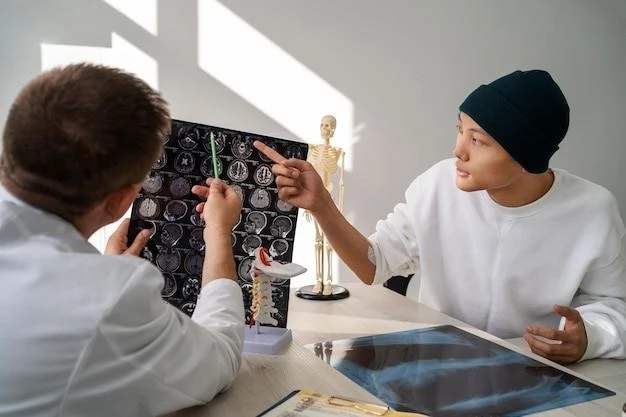Lou Gehrig’s Disease
Lou Gehrig’s Disease, also known as Amyotrophic Lateral Sclerosis (ALS), is a neurodegenerative disorder characterized by progressive muscle weakness. This article will provide an in-depth discussion on the various aspects of ALS, including its pathophysiology, symptoms, diagnosis, treatment, complications, prognosis, as well as research and future perspectives.
Introduction to Amyotrophic Lateral Sclerosis (ALS)
Amyotrophic Lateral Sclerosis (ALS) is a devastating neurodegenerative disorder that affects nerve cells in the brain and spinal cord. This progressive disease leads to the degeneration of motor neurons, which are essential for controlling voluntary muscles. ALS is characterized by muscle twitching, weakness, and stiffness, ultimately resulting in paralysis.
The exact cause of ALS is not fully understood, but it is believed to involve a combination of genetic mutations and environmental factors. The most common form of ALS is sporadic, occurring randomly without a clear genetic link, while a small percentage of cases are familial, inherited due to specific genetic mutations.
Individuals with ALS may experience difficulty walking, speaking, swallowing, and breathing as the disease progresses. While the disease primarily affects motor function, cognitive function can also be impaired in some cases. ALS typically presents in mid to late adulthood, with most individuals diagnosed between the ages of 40 and 70.
Known as Lou Gehrig’s Disease in the United States after the famous baseball player who brought national attention to the condition in the 1930s, ALS remains a challenging and incurable disease. Despite advancements in research and treatment, ALS continues to pose significant challenges to patients, caregivers, and the medical community.
Understanding the Pathophysiology of ALS
The pathophysiology of Amyotrophic Lateral Sclerosis (ALS) involves complex mechanisms that lead to the progressive degeneration of motor neurons. One of the key pathological features of ALS is the accumulation of abnormal protein aggregates in the nerve cells, disrupting cellular function and leading to cell death.
Mutations in various genes have been implicated in the pathogenesis of ALS, with the most well-known genes being C9orf72, SOD1, TARDBP, and FUS. These genetic mutations can impact neuronal function, protein metabolism, and cellular transport mechanisms, contributing to the development of ALS.
Abnormalities in RNA processing, protein misfolding, oxidative stress, mitochondrial dysfunction, and neuroinflammation are also believed to play a role in the pathophysiology of ALS. These processes can trigger a cascade of events that ultimately result in the degeneration of motor neurons and the progressive muscle weakness characteristic of the disease.
As ALS advances, the loss of motor neurons leads to denervation of muscles, muscle atrophy, and weakness. The inability of the motor neurons to transmit signals to the muscles impairs voluntary muscle movement, eventually causing paralysis. In severe cases, respiratory muscles can also be affected, leading to respiratory failure, which is a common cause of death in individuals with ALS.
Understanding the intricate pathophysiological mechanisms underlying ALS is crucial for the development of targeted therapies aimed at slowing disease progression and improving outcomes for patients. Ongoing research efforts continue to unravel the complexities of ALS pathophysiology, offering hope for potential future treatments to combat this devastating neurodegenerative disorder.
Symptoms and Progression of ALS
Amyotrophic Lateral Sclerosis (ALS) is characterized by a spectrum of symptoms that reflect the progressive degeneration of motor neurons in the brain and spinal cord. Early symptoms often include muscle weakness, muscle twitching (fasciculations), and cramping. As the disease advances, individuals may experience difficulty walking, tripping or falling due to muscle weakness, and impaired fine motor skills.
Speech and swallowing difficulties may also emerge as the muscles involved in these functions weaken. Patients with ALS may notice changes in their voice, such as slurring or a softer tone. Swallowing difficulties can lead to choking or aspiration, increasing the risk of malnutrition and aspiration pneumonia.
Progressive muscle weakness and atrophy can result in the inability to perform daily tasks independently. As the disease advances, individuals may experience muscle stiffness, joint pain, and muscle cramps. Respiratory muscles can also be affected, leading to shortness of breath, especially during physical exertion.
The progression of ALS can vary from person to person, but generally, the disease follows a relentless course, with gradual worsening of symptoms over time. While some individuals may experience a slower progression of symptoms, others may decline more rapidly. Ultimately, ALS leads to severe muscle weakness and paralysis, impacting mobility, communication, and eventually respiratory function.
Monitoring symptoms and addressing the evolving needs of individuals with ALS is crucial in providing quality care and support throughout the disease course. Multidisciplinary care teams comprising neurologists, physical therapists, speech therapists, nutritionists, and palliative care specialists play a pivotal role in managing symptoms, maximizing quality of life, and addressing the complex needs of patients and their families.
Case Study⁚ Lou Gehrig and His Battle with ALS
Lou Gehrig, the legendary New York Yankees first baseman, brought national and international attention to Amyotrophic Lateral Sclerosis (ALS) when he was diagnosed with the disease in 1939. Gehrig’s career, marked by remarkable achievements and consecutive games played, came to an abrupt halt as ALS rapidly progressed.
Known as the ″Iron Horse″ for his durability and work ethic, Gehrig faced the devastating effects of ALS with courage and grace. His farewell speech on July 4, 1939, at Yankee Stadium, where he declared himself ″The luckiest man on the face of the earth,″ remains one of the most poignant moments in sports history.
Throughout his battle with ALS, Gehrig exhibited remarkable resilience and strength, becoming a symbol of hope and inspiration for individuals affected by the disease. Despite the challenges posed by ALS, Gehrig’s unwavering spirit and determination left an indelible mark on the public consciousness, raising awareness about the urgent need for research and support for ALS patients.
Gehrig’s tragic death on June 2, 1941, just two years after his diagnosis, further underscored the devastating impact of ALS on individuals and their families. His legacy continues to inspire efforts to advance research, increase awareness, and provide compassionate care for those affected by ALS.
Lou Gehrig’s enduring legacy serves as a reminder of the profound impact of ALS on individuals and the importance of advocacy, research, and support in the fight against this challenging neurodegenerative disorder. His courage and perseverance in the face of adversity continue to inspire generations to uphold the values of resilience, hope, and compassion in the quest to find a cure for ALS.
Diagnosis and Treatment of ALS
Diagnosing Amyotrophic Lateral Sclerosis (ALS) involves a comprehensive evaluation of the patient’s medical history, physical examination, and a series of tests to rule out other conditions with similar symptoms. Electromyography (EMG) and nerve conduction studies are commonly used to assess the electrical activity of muscles and nerves, aiding in the diagnosis of ALS.
While there is no cure for ALS, the management of the disease focuses on alleviating symptoms, improving quality of life, and providing support to patients and their families. Treatment strategies may include the use of medications such as riluzole and edaravone, which are FDA-approved to slow disease progression and manage symptoms.
Physical therapy, occupational therapy, and speech therapy play vital roles in maintaining mobility, independence, and communication skills in individuals with ALS. Assistive devices such as wheelchairs, braces, and communication aids can also enhance quality of life and facilitate daily activities.

Palliative care and symptom management are essential components of ALS treatment, focusing on pain relief, respiratory support, nutritional interventions, and emotional support for patients and their caregivers. Multidisciplinary care teams collaborate to address the diverse needs of individuals with ALS throughout the course of the disease.
Experimental treatments, such as gene therapy, stem cell therapy, and targeted drug therapies, are currently being investigated in clinical trials to explore new avenues for treating ALS. Research efforts aim to identify potential therapeutic targets and develop innovative strategies to combat the underlying mechanisms of the disease.
Early diagnosis, comprehensive care planning, and ongoing research are crucial in improving outcomes and enhancing the quality of life for individuals with ALS. While there is no definitive cure for ALS, a multidisciplinary approach to treatment can help manage symptoms, optimize function, and provide holistic support for patients facing the challenges of this progressive neurodegenerative disorder.
Complications and Prognosis of ALS
Amyotrophic Lateral Sclerosis (ALS) presents a range of complications as the disease progresses, impacting various bodily functions and quality of life. Respiratory failure is a significant complication in ALS, often leading to pneumonia and respiratory infections. Individuals may require ventilatory support to assist with breathing as respiratory muscles weaken.
Nutritional complications can arise due to swallowing difficulties and muscle weakness, increasing the risk of malnutrition and weight loss in individuals with ALS. Speech difficulties can also contribute to challenges in consuming adequate nutrition, necessitating the use of modified diets or enteral feeding tubes to maintain optimal nutritional status.
Muscle cramps, spasms, and pain can cause discomfort and reduced mobility in individuals with ALS, affecting their ability to perform daily activities. Respiratory muscle weakness may result in shortness of breath, especially during exertion, impacting physical endurance and overall quality of life.
As ALS progresses, individuals may experience emotional and psychological challenges related to the loss of independence, communication difficulties, and anticipatory grief. Depression, anxiety, and social isolation are common among ALS patients, highlighting the importance of comprehensive psychosocial support and mental health services.
The prognosis of ALS varies depending on individual factors such as age at onset, rate of disease progression, and presence of respiratory complications. Most individuals with ALS face a debilitating decline in muscle function, leading to increased reliance on assistive devices and caregiver support.
ALS is a progressive and ultimately fatal disease, with a median survival time of three to five years from the onset of symptoms. However, some individuals may live longer with the disease, while others may experience a more rapid decline. Timely intervention, symptom management, and supportive care can help improve quality of life and alleviate distressing symptoms in individuals with ALS.
Research and Future Perspectives on ALS
Ongoing research efforts in the field of Amyotrophic Lateral Sclerosis (ALS) are focused on unraveling the complex mechanisms underlying the disease, identifying novel therapeutic targets, and advancing treatment strategies to improve outcomes for patients. Genetic studies have provided valuable insights into the underlying causes of ALS, highlighting potential pathways for targeted interventions.
Gene therapy holds promise for ALS treatment, with research exploring the use of gene editing technologies to correct genetic mutations associated with the disease. By restoring normal gene function in affected neurons, gene therapy aims to halt disease progression and preserve motor function in individuals with ALS.
Stem cell therapy is another area of active research in ALS, with studies investigating the use of stem cells to replace damaged motor neurons, modulate immune responses, and promote tissue repair in the central nervous system. Stem cell-based approaches offer potential regenerative benefits for neurodegenerative disorders like ALS.
Drug discovery efforts continue to identify potential pharmacological agents that target disease-specific pathways implicated in ALS pathogenesis. Novel drug candidates, including neuroprotective compounds and anti-inflammatory agents, are being evaluated in preclinical and clinical trials to assess their safety and efficacy in slowing disease progression.
Advancements in neuroimaging techniques, biomarker discovery, and precision medicine approaches are enhancing our ability to diagnose ALS earlier, monitor disease progression, and tailor treatment strategies to individual patients. Personalized medicine initiatives aim to optimize therapeutic outcomes and minimize adverse effects in ALS care.
Collaborative research consortia, international networks, and patient registries are facilitating data sharing, accelerating scientific discoveries, and fostering interdisciplinary collaboration in the field of ALS research. By pooling resources and expertise, researchers can collectively address the challenges posed by ALS and work towards translating scientific findings into tangible clinical benefits;
Future perspectives on ALS research are anchored in a multidimensional approach that integrates basic science, clinical trials, biomarker development, and patient-centered care. By combining insights from genetics, cellular biology, neurology, and computational modeling, researchers aim to unlock new avenues for understanding ALS pathophysiology and developing innovative therapies that target the root causes of the disease.
